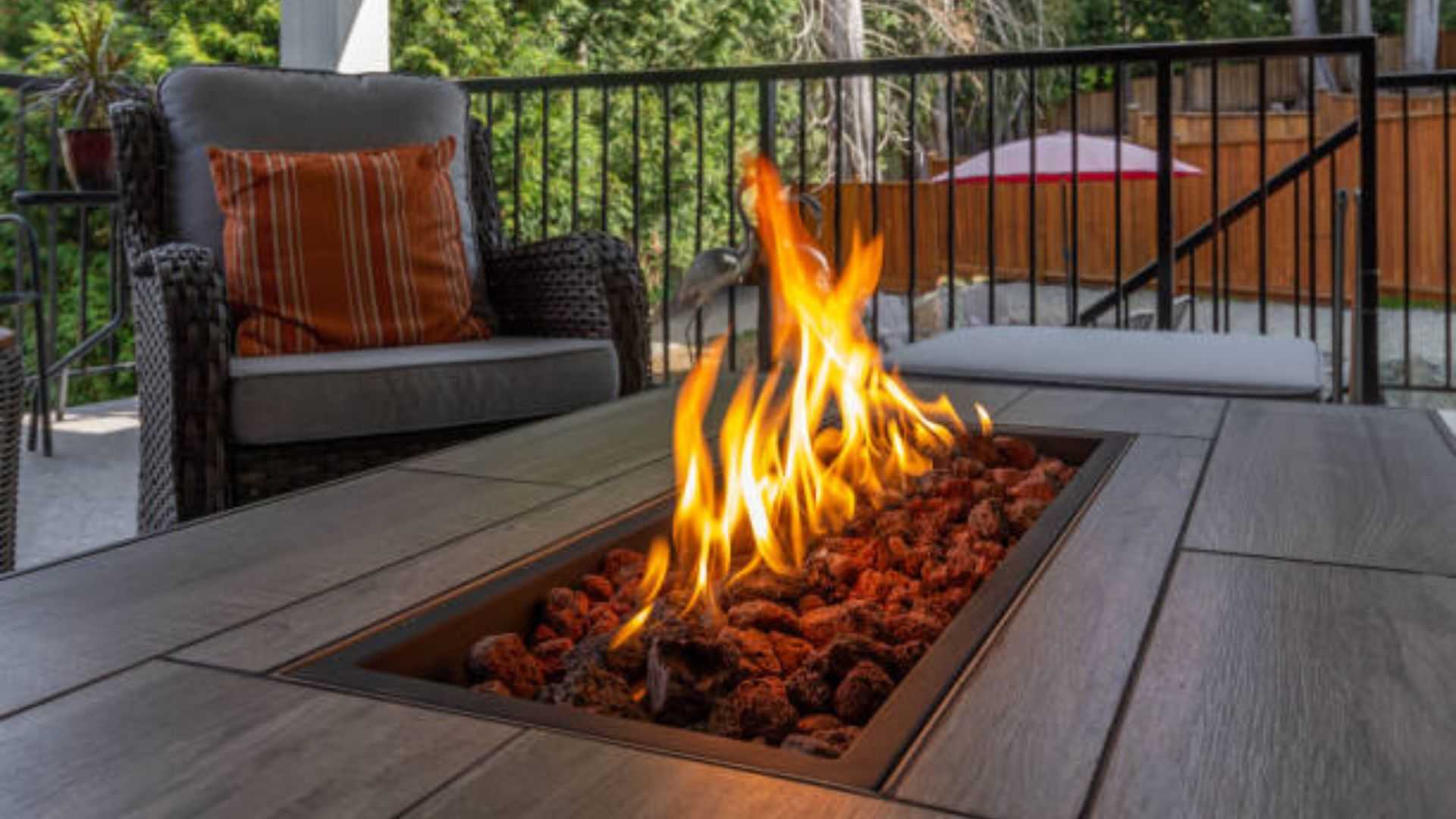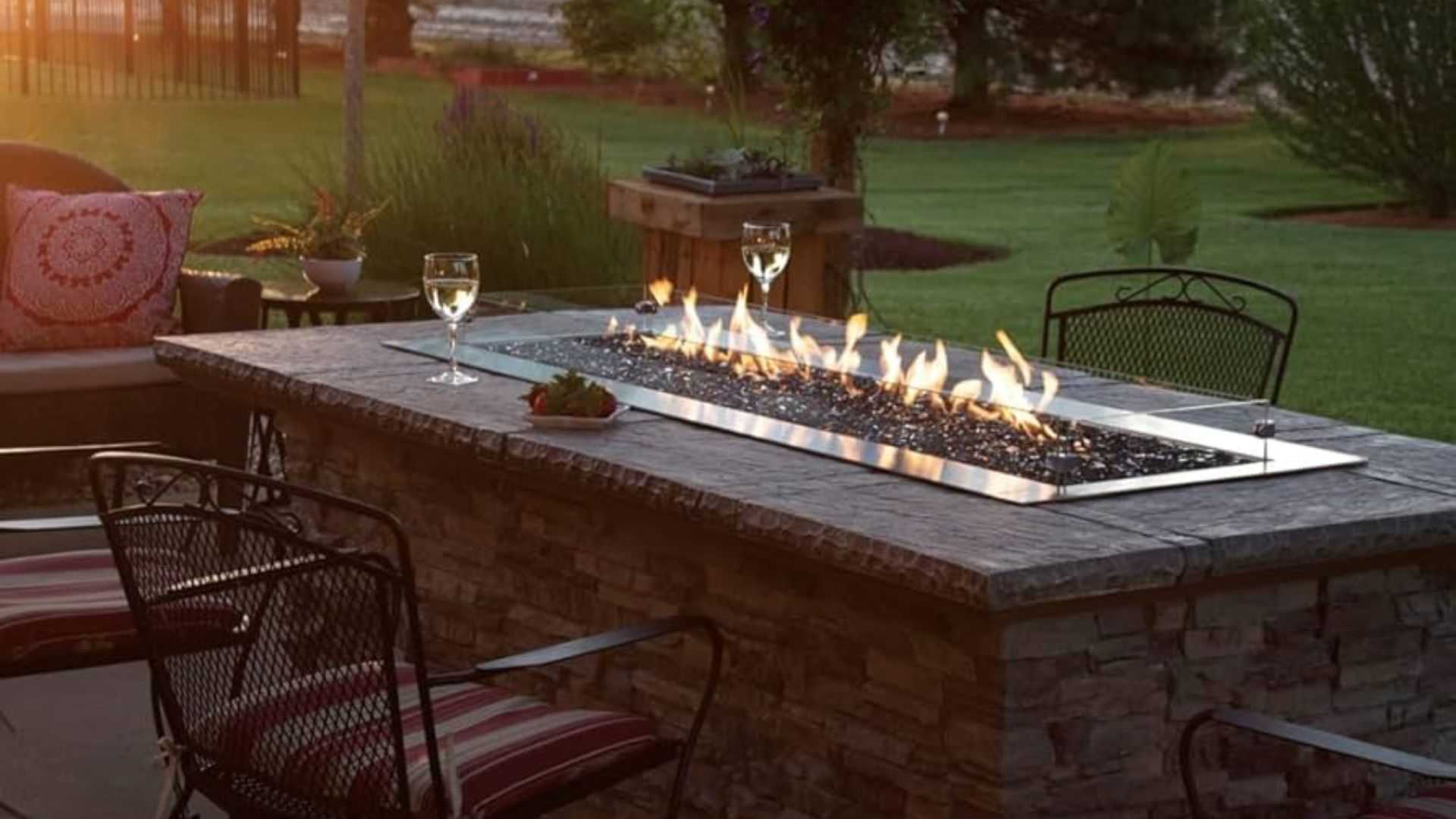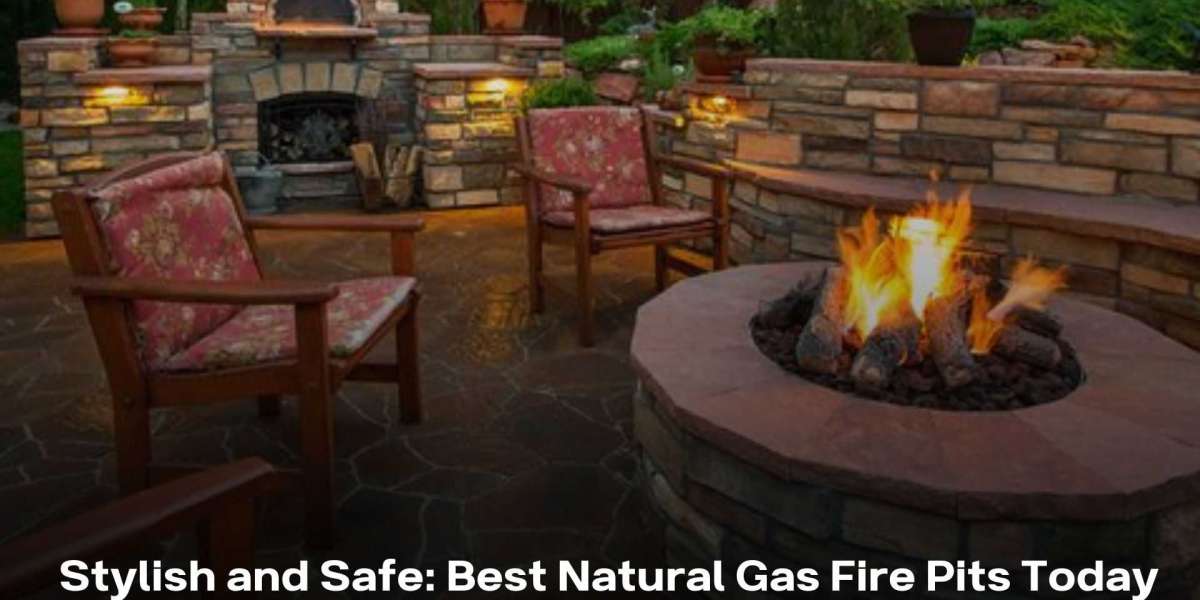Natural gas fire pits are an exceptional choice for homeowners seeking a stylish, clean-burning, and safe way to elevate their outdoor spaces. Combining modern aesthetics with efficient heating, these fire pits are perfect for entertaining guests or creating a cozy retreat in your backyard. Unlike traditional wood-burning options, natural gas fire pits offer convenience and sustainability, making them a preferred choice for eco-conscious homeowners.
Benefits of Natural Gas Fire Pits
Clean and Eco-Friendly Heating
Natural gas burns cleaner than wood, reducing smoke and particulate emissions. This contributes to a healthier environment and makes your outdoor gatherings more enjoyable without the smell of smoke lingering on clothes.
Consistent Heat Output
Unlike wood-burning options that require constant tending, natural gas fire pits provide a steady and easily adjustable heat source. This makes them a practical choice for maintaining warmth during outdoor events.
Cost-Effective in the Long Run
Setting up a natural gas fire pit may cost money initially, but it will save you money in the long run because natural gas is cheaper than wood or propane.
Safety Features of Natural Gas Fire Pits

Automatic Ignition Systems
Modern natural gas fire pits often include automatic ignition systems, allowing easy and safe startup. These systems eliminate the need for matches or lighters, reducing potential hazards.
Safety Shutoff Valves
Many models have safety shutoff valves that instantly stop the gas flow if the flame goes out. This ensures the machine can be used safely even when it's windy.
Top Designs for Natural Gas Fire Pits
Sleek Minimalist Fire Pits
Modern outdoor areas often have simple designs with straight lines and neutral colors. These models look great with modern buildings, which makes them great as a centerpiece.
Tabletop Fire Pits
Compact and functional tabletop natural gas fire pits combine utility with aesthetics. They are perfect for small patios or balconies, providing warmth and style without taking up much space. Check out the best tabletop natural gas fire pits for innovative designs.
Comparing Natural Gas Fire Pits to Other Options
Natural Gas vs. Propane
Natural gas fire pits are more cost-effective and environmentally friendly compared to propane. They offer a continuous fuel source through a gas line, eliminating the need for frequent refills.
Natural Gas vs. Wood-Burning Fire Pits
While wood-burning fire pits have a rustic charm, natural gas fire pits are more convenient, cleaner, and safer. They require no wood storage, produce no ash, and eliminate the risk of flying embers.
Accessories to Enhance Your Natural Gas Fire Pit
Glass Wind Guards
Glass wind guards protect the flame from wind and add safety and elegance to your fire pit setup. These accessories are a must-have for outdoor spaces prone to breezy conditions.
Decorative Fire Glass
Replace traditional lava rocks with vibrant fire glass to elevate the visual appeal of your fire pit. These reflective materials come in various colors, adding a shimmering effect to the flames.
Maintenance Tips for Natural Gas Fire Pits
Routine Cleaning
Regularly clean the fire pit to get rid of dust, dirt, and grease that has built up. To keep the surface from getting scratched, use a soft brush or cloth and ensure nothing is blocking the fire holes.
Inspecting Gas Lines
Check the gas lines for leaks and damage every so often. To find leaks, all you need is soap and water. When the gas is on, look for bubbles forming on the line.
Safety Tips for Using Natural Gas Fire Pits
Proper Installation
Make sure that a certified worker sets up your natural gas fire pit. Gas leaks are hazardous and can happen because of bad fitting.
Ventilation is Key
Continuously operate your fire pit in a well-ventilated area to prevent gas buildup. Avoid placing it in enclosed spaces, as this can create hazardous conditions.
Why Natural Gas Fire Pits Are Environmentally Friendly

Low Carbon Footprint
Natural gas is a cleaner power choice than wood because it produces less carbon dioxide. While you enjoy a fire outside, this helps lower your general carbon footprint.
Sustainable Energy Source
Natural gas is a sustainable option due to its abundant availability and reduced emissions. Choosing a natural gas fire pit supports eco-friendly outdoor living.
How to Choose the Best Natural Gas Fire Pit for Your Needs
Evaluate Your Space
When choosing a fire pit, consider how big your outdoor space is. Small tabletop models work better in smaller rooms, while large fire tables or pits can fit in bigger rooms.
Aesthetic and Functional Features
Determine whether you want your fire pit to serve as a visual centerpiece or provide additional functionality like a cooking grill. Explore options with features tailored to your needs.
Natural gas fire pits are the best way to heat your outdoor space stylishly, safely, and environmentally friendly. They are an excellent investment for any outdoor area because they burn cleanly and efficiently and are easy to use.
Frequently Asked Questions About Natural Gas Fire Pits
1. Are Natural Gas Fire Pits Safe for Families?
Yes, natural gas fire pits are among the safest options available. Features like safety shutoff valves and wind guards provide a secure outdoor heating solution for households with children or pets.
2. Do Natural Gas Fire Pits Require Special Maintenance?
While maintenance is minimal, regular cleaning and gas line inspections are essential to ensure safe and efficient operation.
3. Do natural gas fire pits work in windy conditions?
Yes, many models include glass wind guards that help protect the flame from being extinguished by wind. However, placing the fire pit in a partially sheltered area is advisable for optimal performance.
4. Can I convert a propane fire pit to use natural gas?
Some propane fire pits are convertible to natural gas using manufacturer-recommended conversion kits. Always consult a professional to ensure proper and safe conversion.
5. What is the lifespan of a natural gas fire pit?
With regular maintenance, natural gas fire pits can last for many years. Periodic cleaning, inspection of gas lines, and proper storage during off-seasons contribute to their longevity.













